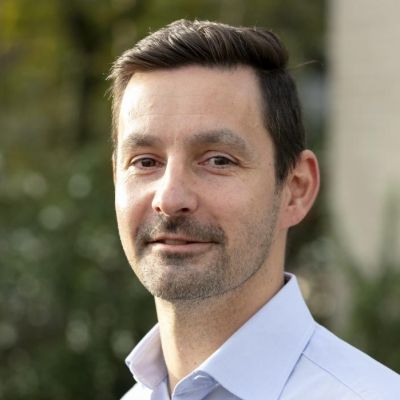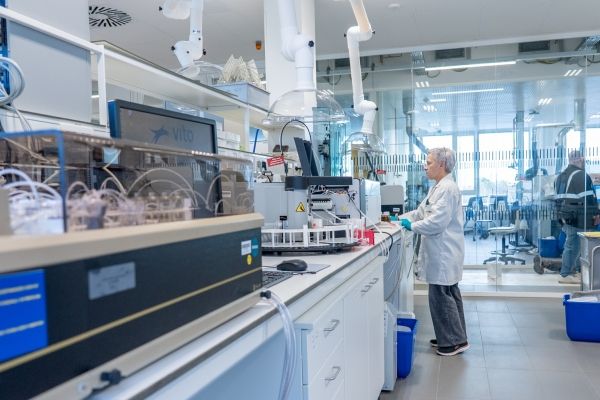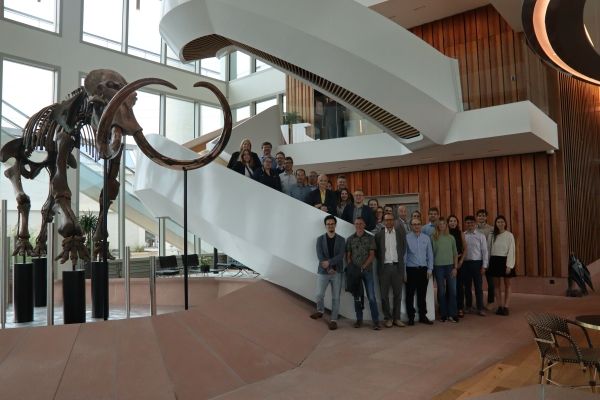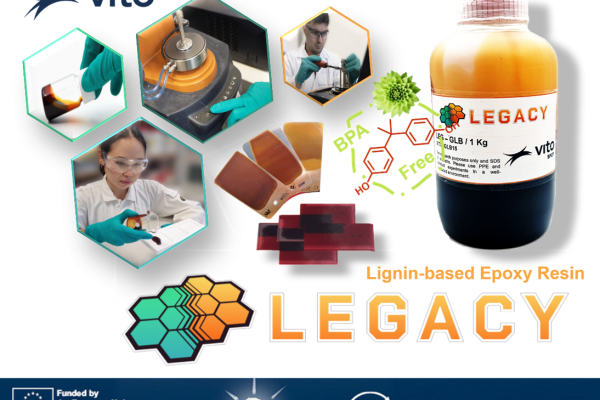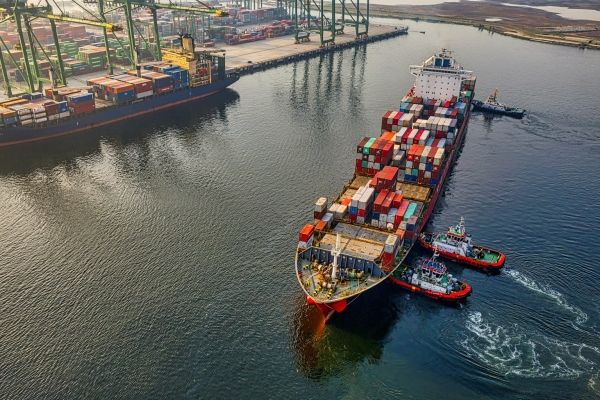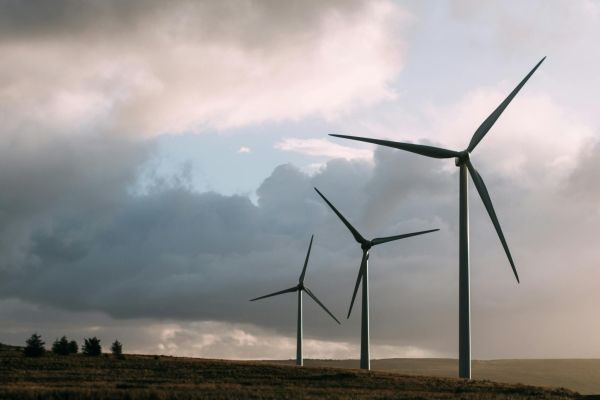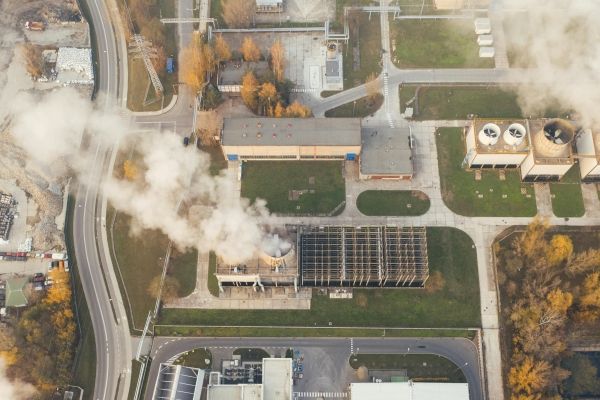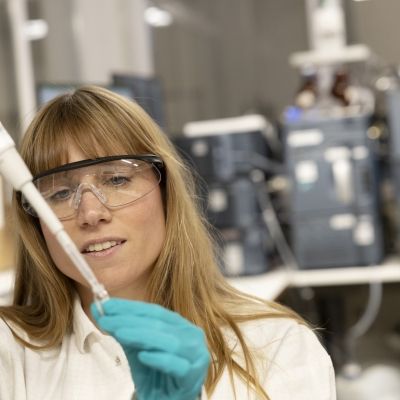MooV guides Umicore towards optimum on-site logistics
At the Umicore site in Hoboken, precious metals and other valuable metals are recovered from devices and waste substances that have been disposed of. Activity there is buzzing: tons of raw materials are being moved around on a surface area of 110 hectares, which means many transport journeys. In order to better organise these journeys, the company called upon VITO’s help, which offers a service for analysing and optimising supply chains and logistical flows called MooV. Umicore was able to map out and reduce the number of transport journeys on the site, meaning there is also less dust blowing about resulting from loading and unloading. The collaboration provided some new ideas, that Umicore will put into practice.
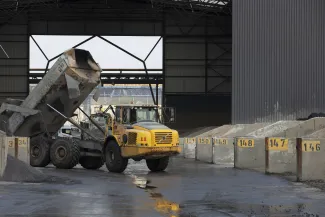
Circularity is the core business of Umicore’s Hoboken site, as the Belgian global player in circular material technology. Hundreds of thousands of tons of materials are processed every year at the site, which covers over 110 hectares. No fewer than twenty different non-ferrous metals are retrieved from waste streams to then be recycled – precious metals from electronic waste and car catalytic converters, for example, or nickel and cobalt from rechargeable batteries. This is how Umicore is contributing to closing the circles, and it has been helping to write the circular story that needs to become the future of European industry for around twenty years now.
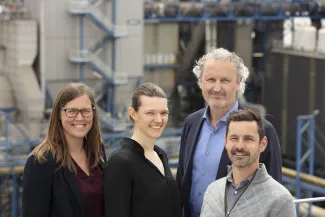
Supply chain optimisation
From circularity, it is only a small step towards care for the environment. Umicore spares no expense or effort. For example, for some time now, it has been investing around 25 million euros per year into environmental improvement measures on the site, in order to limit the consequences of the activities on the nearby surroundings as far as possible too. ‘In the past, we had a significant focus largely on reducing guided emissions through improved filtering techniques and suction facilities, for example. The majority of our environmental investments are now mainly focused on reducing fine and rough particulates with metal particles even further’, says Michiel Ceulemans, Head of the Environment Depart at Umicore in Hoboken. ‘Our site has already made a lot of progress in these terms, but we think it’s important to continue our efforts and to keep improving them.’
The windblown dust, which may end up outside the site, is due in part to the many thousands of on-site transport journeys. That makes an insight into the consequences of this transport on the total quantity of windblown dust important. What are the major transport corridors? Where are the hot spots for windblown dust? What is the impact of a different site layout on the number of logistical journeys? And does this also have a positive effect on the quantity of windblown dust?
In order to get an answer to these kinds of questions, Umicore knocked on VITO’s door two years ago. After all, with MooV, it holds a logistical model for optimising companies’ supply chains, based on objective data and with a strong scientific foundation. ‘When companies make strategic and tactical decisions relating to their supply chain, this is still often done on a gut basis,’ says Ruben Guisson from VITO. ‘With our MooV model, we can start calculating the impact of such decisions, and based on the results, we offer companies decision support so they can start organising their logistical chains better.’
The same applies for journeys of material and raw material flows at Umicore’s Hoboken site. At the company’s request, the MooV experts identified these flows, linked to the total annual quantity of windblown dust during loading and unloading, and during transport on the site. ‘This immediately led to some crucial insights, such as the identification of areas on the site where some major sources of dust are to be found,’ says Annelies De Meyer from VITO. Based on the insights, some improvement scenarios were drawn up, whose impact was then recalculated again with MooV. ‘This is what’s handy about our model: you can calculate the anticipated impact of measures and interpret and assess the results. This is how we offer companies decision support with critical supply chain issues.’
One example of a measure investigated with MooV is the targeted placement of wind screens to avoid windblown dust. ‘The choice of screen location is decisive for obtaining the maximum result,’ says Lies Eykens, Environmental Technology Project Manager at Umicore. ‘Thanks to VITO, we now know far more about the less obvious hot spots for windblown dust, resulting from the on-site logistical activities, and where measures will be the most effective.’
Eykens looks back on the collaboration with VITO with satisfaction. ‘It’s been demonstrated that a collaboration with external experts and bringing together all the operational knowledge we have internally, in all its variety, can lead to a highly successful project. With the aid of this project, we gained some new knowledge at Umicore and we can be far more effective in reducing our impact on the surroundings.’ The collaboration was also strongly appreciated by VITO. De Meyer: ‘Umicore’s readiness to share information on operational processes was crucial. Without their input into the model, we couldn’t have achieved this result’. As part of this project, there was also a smooth collaboration with the advisory and engineering agency Royal Haskoning DHV. ‘The complementarity between their technical knowledge and our supply chain-expertise was added value to achieve a quality end result’, as De Meyer knows. The collaboration led to a number of new ideas for further reducing windblown dust, such as adaptations to material flows and storage areas.
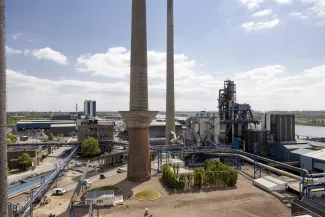
Tailored service provision
Although MooV was actually developed by VITO for optimising logistical chains between different companies (or company departments) – which generally translates into a certain geographical region distribution – the model was now being applied within a single corporate site. ‘But that turned out to work just fine,’ says De Meyer. ‘The way the model works is that we can smoothly adapt it to a specific issue and to the unique situation of a particular company. So this is how we deliver a tailored service.’
For VITO, this was the first time it had used its MooV model at the level of a corporate site. However, the commission portfolio had already demonstrated that the service can be widely used. For example, cases had already been handled around the distribution of postal packages and the transport of construction materials. In addition, there are projects with a bio-based and/or circular line of approach in research processes, such as grass refinery, algae cultivation or processing residual biomass streams.
In the future, VITO certainly aims to offer its MooV service to other companies as well. ‘In doing so, we’ll be targeting any company that’s questioning its supply chain and wishes to optimise it. That might involve new logistical chains, existing chains or chains undergoing a change,’ says Guisson. ‘It’s then up to us to offer the companies peace of mind and to support them in their decisions.’



